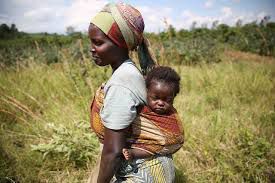5 countries in Africa with shortest life expectancy

Africa is a continent celebrated for its cultural richness and diversity. However, it also faces stark inequalities—particularly in the realm of public health—where some nations continue to struggle with alarmingly low life expectancy rates.
This article highlights five African countries where average life expectancy remains critically low due to poor access to healthcare, ongoing conflict, economic instability, and underdeveloped public health systems.
Life expectancy refers to the average number of years a person is expected to live, based on prevailing social, economic, and health conditions. In many parts of Africa, this metric is adversely impacted by high rates of infant and maternal mortality, infectious diseases, malnutrition, poor sanitation, and inadequate medical infrastructure.
1. Chad – 52.5 Years
Bukom Banku and comedian Aka Ebenezer entertained fans with a comedic boxing match at Ashantifest Boxing Night, followed by an exciting main event victory by Ashanti Warrior. Watch as the two clash in the ring…
READ MORE: IMF reaches staff-level agreement with Ghana for US$370 million disbursement
Chad ranks lowest in life expectancy across the continent. Widespread communicable diseases, malnutrition, and poor maternal health continue to claim lives prematurely.
According to the World Health Organization (WHO), “life expectancy at birth in Chad increased by 7.92 years—from 51.2 years in 2000 to 59.1 years in 2021.” Despite this progress, the country’s overall healthcare situation remains dire.

2. Nigeria – 53.63 Years
Nigeria, Africa’s most populous country, holds the second-lowest life expectancy. The prevalence of communicable diseases such as malaria—which remains the leading cause of death—alongside cardiovascular conditions like ischaemic heart disease and stroke, contribute significantly to this figure.
3. Central African Republic – 53.9 Years
In the Central African Republic (CAR), the average life expectancy is around 57 years. Years of armed conflict, political instability, and widespread poverty have devastated the nation’s healthcare system.
Tuberculosis, malaria, and violence are among the leading causes of death in the country, with limited access to hospitals or trained professionals in many regions.
4. South Sudan – 55.0 Years
Despite being the world’s youngest nation, South Sudan has one of the lowest life expectancies. The country continues to grapple with internal conflict, food insecurity, and weak healthcare infrastructure.

Civilians face displacement, lack of access to basic health services, and frequent outbreaks of disease. “South Sudan’s challenges are deeply rooted in its ongoing struggle for peace and development,” experts say.
5. Somalia – 56.0 Years
Somalia, located in East Africa, rounds out the list. With more than half the population living below the poverty line, the country faces chronic food insecurity and persistent outbreaks of cholera and measles.
READ MORE: Investigation implicates Kenya in global organ trafficking ring
According to WHO data, “lower respiratory infections are currently the leading cause of death in Somalia.” Malnutrition and limited access to clean water exacerbate the already fragile healthcare environment.
Conclusion
While some African nations are making strides in public health, these five countries remain in critical need of systemic interventions. Addressing life expectancy disparities requires a holistic approach—one that includes strengthening healthcare infrastructure, improving economic conditions, and fostering long-term political stability.
Without sustained efforts from both local governments and the international community, millions will continue to face preventable early deaths.








